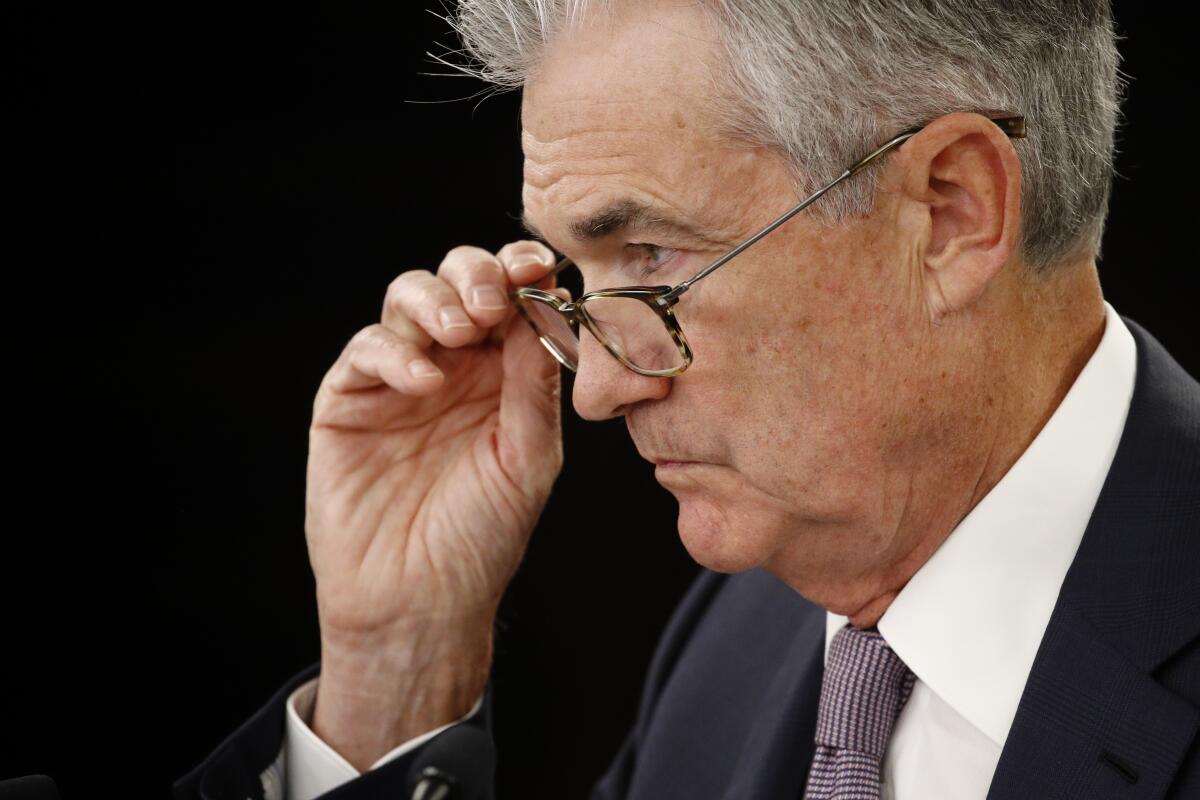Fed unveils dramatic measures to ease market strain from virus

The Federal Reserve took aggressive steps Thursday to ease what it called “temporary disruptions” in Treasuries, flooding the market with liquidity and widening its purchases of U.S. government securities in a measure that recalls the quantitative easing it used during the financial crisis.
The Federal Reserve Bank of New York said in a statement that the “changes are being made to address highly unusual disruptions in Treasury financing markets associated with the coronavirus outbreak” and had been done at the direction of Fed Chairman Jerome H. Powell in consultation with the Federal Open Market Committee.
Under the Fed’s existing program to buy $60 billion a month in securities, the purchases will be widened to include coupon-bearing notes across a range of maturities to match the maturity composition of the Treasury market, it said.
U.S. stocks initially pared losses after the surprise announcement but then resumed their decline, eventually finishing with their biggest one-day loss since 1987. Investors were unsure the Fed move will be sufficient to shelter the economy from the outbreak’s fallout — and are still waiting for a robust U.S. government response.
“This is a full-blown crisis response operation, intended to make it abundantly clear that the Fed will not allow liquidity to dry up,” said Ian Shepherdson, chief economist at Pantheon Macroeconomics. “We expect the Fed to purchase $60 billion of securities across the spectrum for the foreseeable future: QE4 is here.”
In addition, the New York Fed offered $500 billion in a three-month repo operation and said it would repeat the exercise Friday, along with another $500 billion in a one-month operation, and continue on a weekly basis for the rest of the monthly calendar. This adds a massive jolt of liquidity to financial markets that will also expand the Fed’s balance sheet for the duration of the operations.
The Fed has been under increasing pressure to act as investors lost faith in the U.S. government’s ability to quickly produce a coherent policy response after President Trump addressed the nation Wednesday with few details on fiscal stimulus plans but restrictions on travel from Europe to the U.S. that deepened the sense of alarm.
“President Trump set out to calm everyone’s concerns, and he added fuel to the fire,” said Jack Ablin, chief investment officer of Cresset Capital Management, a Chicago wealth-management firm. “Right now, if you look at the technicals, we had finally slipped into what I’d call panic.”
U.S. central bankers delivered an emergency half-percentage-point cut to interest rates last week and were expected to move again when they meet Tuesday and Wednesday in Washington, if not sooner, with some economists predicting they could slash rates to zero from 1% to 1.25% at the moment.
“Fed did its part today of helping with market functioning,” said Priya Misra, head of rates strategy at TD Securities. “We still need the fiscal help.”
More to Read
Inside the business of entertainment
The Wide Shot brings you news, analysis and insights on everything from streaming wars to production — and what it all means for the future.
You may occasionally receive promotional content from the Los Angeles Times.










